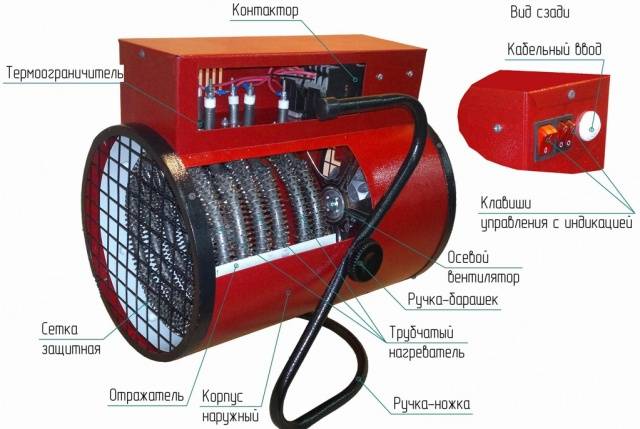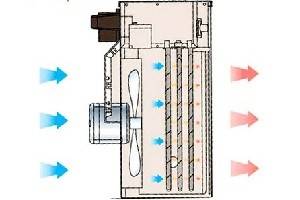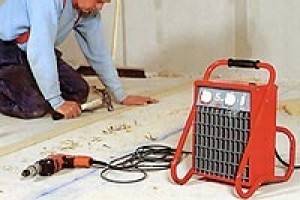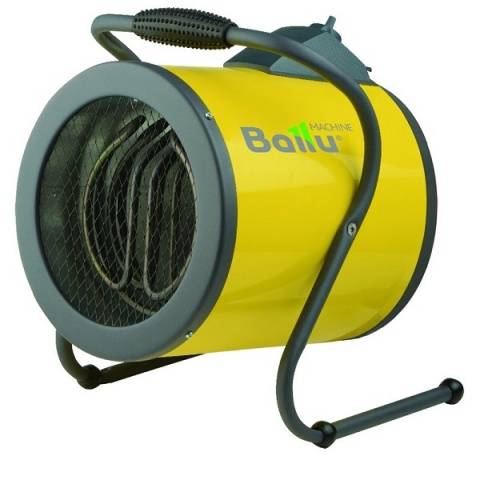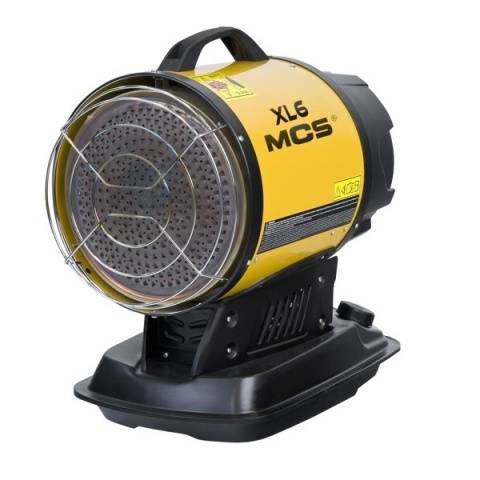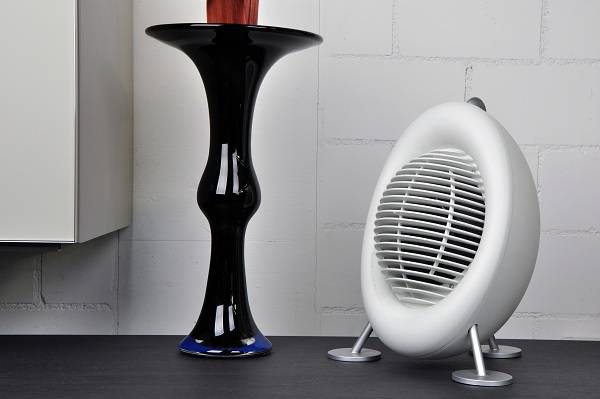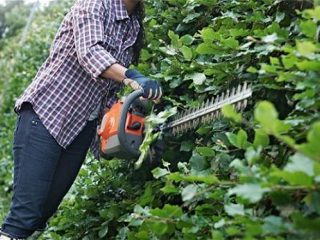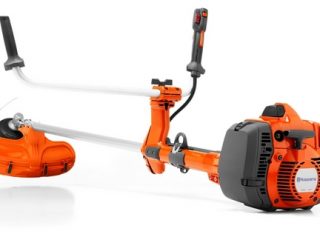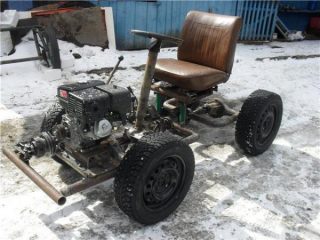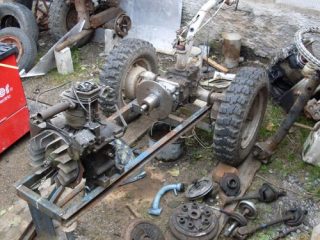Content
With the onset of cold weather, devices that run on electricity are most often used to heat the room. The modern market offers a huge selection of fan heaters, oil radiators, convectors, etc. Electric heat guns are rapidly gaining popularity, allowing you to warm up the air in any room in a matter of minutes.
Features of the design of a thermal electric oven
Depending on the model, electric heat guns can operate on 220 and 380 volts alternating current. Powerful electrical appliances are used in production. For domestic needs, models are used that operate on a 220 volt network.
To get a closer look at the electric heat gun, let's look at its device:
- All elements of the thermal electrical appliance are located in a metal case. The gun is equipped with a comfortable handle for moving. A metal stand is fixed under the body below.
- An electric heating element is installed inside the body, which plays the role of a heater. It generates heat after a voltage of 220 or 380 volts is applied to it. The manufacturer uses precisely tubular models. Such heating elements last longer and are fireproof.
- A reflector is located around the heater. It prevents the body from overheating and directs heat to the outlet of the electric gun - the nozzle.
- A fan is located in front of the heater, that is, on the back of the heat gun. It is driven by an electric motor powered by 220 volts.
- Any model of electric heat gun is equipped with overheating protection. The sensor turns off the voltage supply to the heating element when the temperature of the device case approaches a critical mark. The automatic operation of the heat gun is controlled by a thermostat. It allows you to maintain the set temperature.
- Control keys are installed on the body of the electric gun. Usually they have a light indication.
Electric heat guns work on the principle of the familiar fan heater. That is, they take cold air and give warm air. The fan installed in front of the heating element creates an air flow during the rotation of the blades. Passing through the heating element of the electric oven, the air takes away heat, after which it enters the directed point of the room through the nozzle.
The main advantage of an electric gun over analogues that run on gas and diesel fuel is environmental friendliness. The electrical device practically does not burn oxygen during operation, and there are no emissions of harmful substances along with combustion products. Owners of diesel heaters know how hard it is to start them in the cold to warm up a garage or warehouse. The electric gun will turn on without problems at any negative temperature, the main thing is that there is a voltage of 220 or 380 volts. But if there is no electrical connection nearby, you will not be able to use the heat device, and this is its only drawback.
Scope of electric heat guns
Due to their good technical characteristics, electric guns are widely used in many areas of human life:
- With the onset of cold weather for an apartment, a heat gun is the best source of heat until the central heating is working. The device can be taken with you to the dacha, installed in a glazed gazebo, used to heat an office, etc. In general, a heat gun can be used in any room where people are.
- For household purposes, the use of an electric heater helps to dry the cellar or pantry, warm up the car in severe frost, and maintain the optimal temperature in the greenhouse.
- The electric gun is irreplaceable when performing construction and repair work. The device is used to heat the canvas when installing a stretch ceiling, drying plaster, etc.
- In industry, powerful three-phase heating units are most often used for heating large workshops, and they are also used to perform certain technological work.
An electric heat gun is capable of working under almost any conditions, the main thing is to use it carefully inside damp rooms. It is also important to pay attention to the wiring. With a weak cross-section of the cable, it will overheat with subsequent burnout.
In the video, a review of electric heat guns:
Rules for choosing an electric heat gun
According to many people, a good heater is one that consumes little electricity and heats up perfectly. In some ways they are right. But how to choose the best heat guns among the large number of models? It should be noted right away that all electric heat guns operating from a 220 V network consume little energy. And this is not due to the power of the heating element. The fact is that the heater turns on for a short time. When the maximum threshold of the set temperature is reached, the heating element is turned off, and only the fan that consumes little electricity remains to work.
However, the consumer must have a clear idea of what criteria should be used to choose an electrical appliance:
- First, a person needs to decide why he buys a thermal electric gun, that is, what tasks the device will cope with. If this is a periodic heating of a small room, then it is reasonable to give preference to a low-power cannon. For repair work or heating the greenhouse, it is worth buying more professional models.
- The second important factor is the characteristics of the room where the heat gun will operate. The area, configuration, quality of thermal insulation of building elements are taken into account. These parameters determine how much power and how much you need to buy electric guns.
- When choosing an electrical appliance in terms of power, you must first test the network. First, they determine what voltage is supplied: 220 or 380 volts. Secondly, you need to make sure that the cross-section of the wires is sufficient for such a load.
- Parameters such as the mass and size of the heat gun are not very important, but the comfort of working with an electrical appliance depends on them.
- Regarding the price, it should be noted: not all good things are expensive. Often sellers inflate the price of a product because of the brand name. When choosing a thermal electric oven, they are guided by the technical characteristics of the device, and then they are already determined with the manufacturer and the price.
Almost all models of heat guns are designed to operate for up to 10 years under the conditions recommended by the manufacturer. That is why you should carefully approach the choice of an electrical appliance.
The video tells about the rules for choosing a heat gun:
IR heat guns
In popularity, electric models compete with infrared heat guns operating on the principle of radiation.IR devices do not have a built-in fan, since there is no need to create an air flow. Infrared rays heat the surface of any object, which in turn gives off heat to the air.
However, it should be taken into account that only those objects that are in the radiation area receive heat. This determines the specifics of the use of IR heat guns. The device is relevant where spot heating is required.
What is better to buy: an electric gun or a fan heater
The work of an electric oven and a fan heater is almost the same. Both appliances use a fan to blow air through the heating element. An inexperienced person takes what is cheaper - a fan heater. However, you need to know that these devices, similar in functionality, have significant differences.
So, any of these devices are bought to heat a specific object. Here you need to take into account the volumes of heated air. The power of fan heaters is limited to 1–2 kW, and the electric gun is capable of delivering more than 4 kW per hour. Here it is worth thinking that for heating a large hangar it is better to buy one heat gun than ten fan heaters.
But in an apartment it is better to give preference to a heat-ventilator. They are more compact, more beautiful, and the power of 1-2 kW is enough to heat one room. Expensive models of fan heaters are equipped with ceramic heaters that do not burn oxygen during operation. There are ordinary spirals inside the cheap devices. It is undesirable to use them in a living room, especially if the humidity is very high.
Almost all fan heaters have the function of turning off the heating element. In an apartment, such a device can be used in the summer instead of a fan to cool the air. Now manufacturers have begun to supply this function with electric heat guns. The devices can even have a three-stage regulation of the temperature of the supplied air: cold, warm, hot.
Testimonials
Which of the heating devices to choose for their own use, let the owner decide. And let's take a look at the reviews of consumers who have an electric heat gun on the farm.
